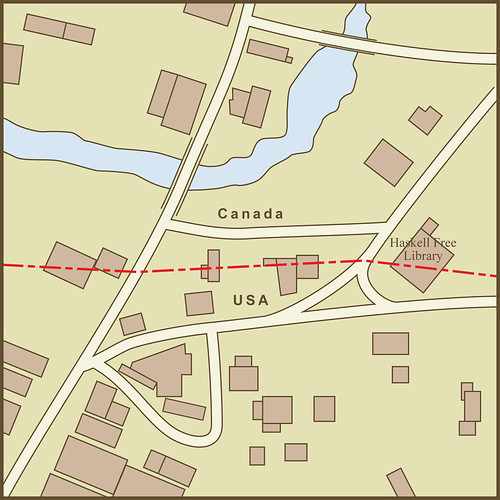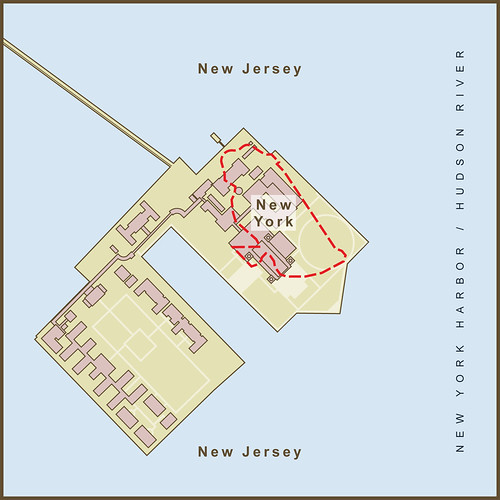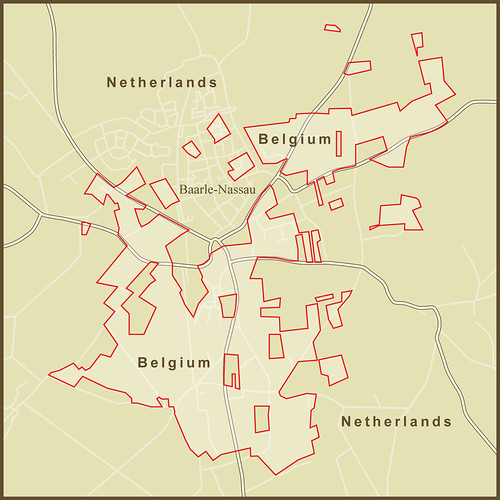
A Map of the Border Between the USA and Canada as it Passes Through the Town of Derby Line, Vermont, a photo by amproehl on Flickr.
The story of Derby Line Vermont begins with a mistake and ends with an intentional act inspired by the mistake. For most of it's 2000 mile length, the USA / Canada border follows the 45th parallel. I have already written about the exception at the Northwest Angle in Minnesota that was created due to an error about how far North the Mississippi River went. Here in Vermont, the surveyors were intending to follow the 45th parallel, they were just a bit sloppy in their work and unintentionally marked the line too far North. The Town developed along the line along with it's sister town, Stanstead Quebec on the Canadian side.
Sometime in the latter part of the 1800s, Carlos Haskell an American met Martha Stewart (not that Martha Stewart) who had grown up on the Canadian side. They married and settled in Derby Line. Sometime around the turn of the century, they decided to honor the town's erratic border by building a library and opera house right on the border so that Americans and Canadians would both be able to use it. If I were erecting such a monument, I think I would have aligned the building so the border passed symbolically through the middle. Not so with the Haskell Free Library as it came to be known. The border passes diagonally through the building. The line is marked in the floor (you can see pictures of the interior at the CLUI link below). The line was requested by the insurance companies so they would pay only for damages to their part of the building.
In the library, the reading room is on the US side while the stacks are on the Canadian side. In the upstairs opera house, most of the seats are on the US side while the stage is on the Canadian side. This has prompted locals to call it alternatively, "the only library in the USA with no books" and "the only opera house in the USA with no stage".
Having such a small town straddles an international border invites a different perspective on international relations. The Center for Land Use Interpretation has an essay about the town on their website. The author makes the comment that two kids having a game of catch across the border would be perfectly legal. However, each time someone caught the ball they would have to walk over to the customs office to declare the ball.
When the Haskell's built the library, their intention was that people from both sides of the border would be able to use it. There are doors on the Canadian and USA side to enable this. The town also has several small roads that cross seamlessly across the border. All of this is threatened in the post-9/11 world because open, fuzzy borders make the US Department of Customs and Immigration nervous. There have been talks to tighten the links but, according to Wikipedia at least, the Haskell Free Library remains free and open to American and Canadian alike.
Sources:
http://en.wikipedia.org/wiki/Derby_Line,_Vermont
http://web.archive.org/web/20070618080148/http://www.cnn.com/2007/US/05/26/border.quirk.ap/index.html
http://www.clui.org/lotl/v29/m.html






